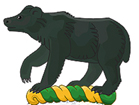 Ontario
Ontario
Kitchener-Waterloo
1. Gustav Bakos Observatory (University of Waterloo).
2. Observational facility  .
.
3. 43° 28' 14" N, 80° 32' 29" W
4. 1967.
5. University observatory dedicated chiefly to undergraduate training, and public outreach.
6. The original primary instrument was a 12-inch Tinsley classical Cassegrain procured by Gus Bakos (1918-1991), the University of Waterloo's first astronomer, after whom the observatory is now named. After some decades of service the Tinsley was replaced by a 12-inch Meade Schmidt-Cassegrain. In past decades classical studies of binary stellar systems were pursued with the equipment.
7. Private, but with public outreach programs.
8. https://uwaterloo.ca/physics-astronomy/community-outreach/gustav-bakos-o...
https://articles.adsabs.harvard.edu/pdf/1993BAAS...25.1495F
https://casca.ca/?page_id=18693
9.
Ottawa
1. Cliff Street Observatory.
2. Oservational facility  .
.
3. 45° 25' 12" N, 75° 42' W
4. 1890-1905(?).
5. First national observatory.
6. The Cliff Street Observatory was established by the surveying branch of the government, as suggested by the Surveyor-General E.G. Deville. It was equipped with a transit house for meridian observations with a 3-inch O.G. transit, and a roll-off shed observatory housing an equatorially mounted 6-inch reflector. It's chief work seems to have been directed to maintaining standards in astronomical surveying (rating equipment, & training & assessing field personal), but the equatorial telescope was occassionally used for education and public putreach. This observatory was the immediate predecessor of the Dominion Observatory. According to Jarrell the observatory was rebuilt in 1912, and continued till 1939.
7. The buildings, and indeed the site no longer exist; the Supreme Court of Canada now occupies the area.
8. Richard A. Jarrell, The Cold Light of Dawn: A History of Canadian Astronomy (Toronto-Buffalo-London: University of Toronto Press, 1988), pp. 193-194
J.H. Hodgson, The Heavens Above and the Earth Beneath: A History of the Dominion Observatories. Part 1: to 1946, Geological Survey of Canada Open File 1945 (Ottawa: Energy, Mines and Resources Canada, 1989), pp. 6-8
9. 
site of the former Cliff Street Observatory
1. Dominion Observatory, forner Experimental Farm site.
2. Observational facility, and research institute 
 .
.
3. 45° 23' 24" N, 75° 42' 36" W
4. 1905.
5. Canada's national observatory ("Canada's Greenwich"), which, besides being the centre for practical colonial astronomy, saw the commencement of long-term publicly-funded astrophysics in Canada.
6. A successor to the Cliff Street Observatory, the DO owed its monumental aspect to efforts of "nation building" during the time of Sir Wilfrid Laurier & successors. The building was designed by Fenning Taylor, in the office of the government's chief architect, D. Ewart. The facility was well-equipped with a 15-inch refractor by John A. Brashear and Co. equatorially mounted by Warner & Swasey, spectrographs & photometers, 4.5-inch Cooke photo-equatorial, a Brahsear 8-inch f/5 astrograph mounted with Brashear 6-inch, and Zeiss-Tessar 3.3-inch astrographs (enclosure not completed till 1914), and an horizontal solar telescope (1909 - f/48, with an 20-inch coelostat, and at first a Rowland grating, replaced by one by A.A. Michelson) as the principal permanent instruments for astronomy in the early years of operation. There was also a complement of precision time-keeping, & geophysical instruments. The instruments were used for the first meaningful programs in astrophysics in the country (cheifly due to the presence of J.S. Plaskett, who went on toe found the Dominion Astrophysical Observatory). The DO was the site of Canada's prime meridian, important for ongoing colonial surveying (e.g., the Dominion Land Survey), did routine work in rating chronometers, and was the home of Canada's time service. Important meteoritic work was conducted here including the program to identify impact craters in Canada, which ran from ca. the early 1950s-1970. The instrumetns are now in the collections of the Canada Science and Technology Museum. The site also has historic plaques dedicated to W.F. King, the founding Director of the DO, and to Sir Sandford Fleming.
7. Private, now part of the development of the ... The site is undergoing redevelopment, and the plan for the eventual disposition of the DO building and site is not public knowledge.
8. Malcolm M. Thomson, The Beginning of the Long Dash: a History of Timekeeping in Canada (Toronto: University of Toronto Press, 1978) - deals with astronomical time kepping and time standards at the Dominion Observtory Richard A. Jarrell, The Cold Light of Dawn: A History of Canadian Astronomy (Toronto-Buffalo-London: University of Toronto Press, 1988)
J.H. Hodgson, The Heavens Above and the Earth Beneath: A History of the Dominion Observatories. Part 1: to 1946, Geological Survey of Canada Open File 1945 (Ottawa: Energy, Mines and Resources Canada, 1989) - the best history of any Canadian astronomical insitution to date
John H. Hodgson, The Heavens Above and the Earth Beneath: A History of the Dominion Observatories. Part 2: 1946-1970, Geological Survey of Canada Open File 1945 (Ottawa: Energy, Mines and Resources Canada, 1994) - the best history of any Canadian astronomical insitution to date
CSTM ingenium website - the repository of the astronomical apparatus from the former DO
9. 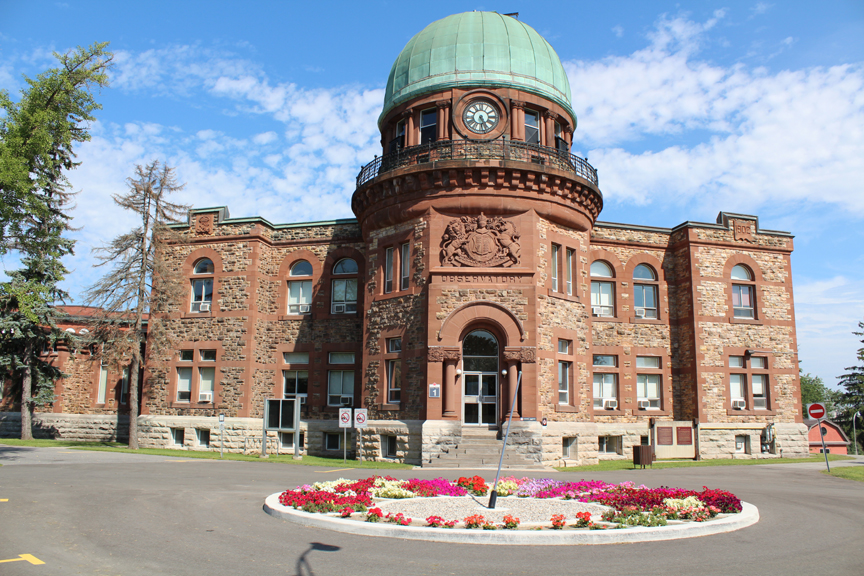
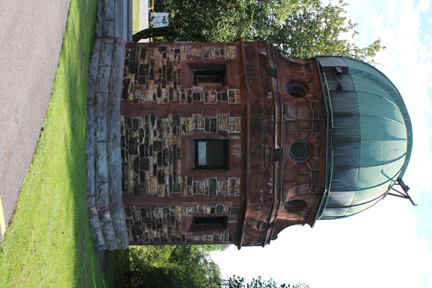 Dome for photographic telescopes
Dome for photographic telescopes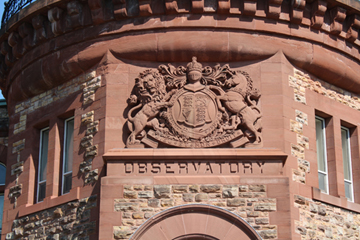
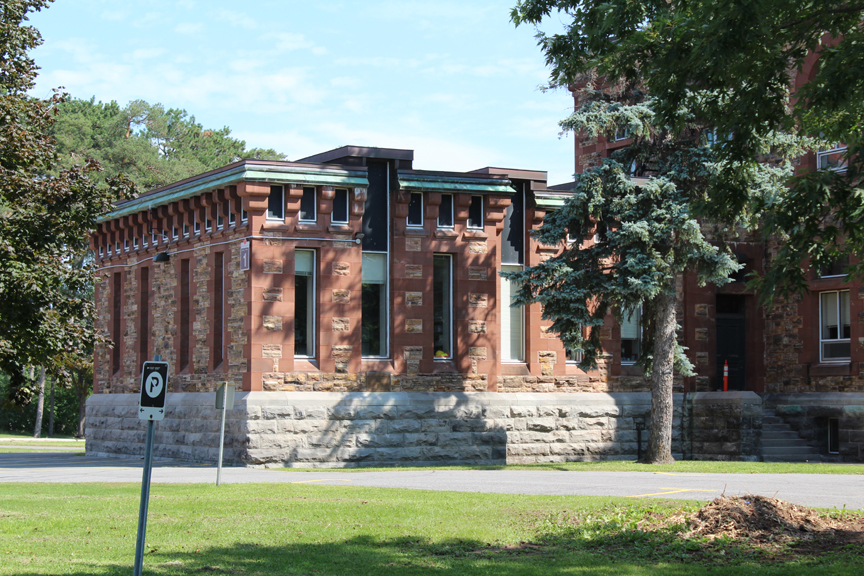
transit house
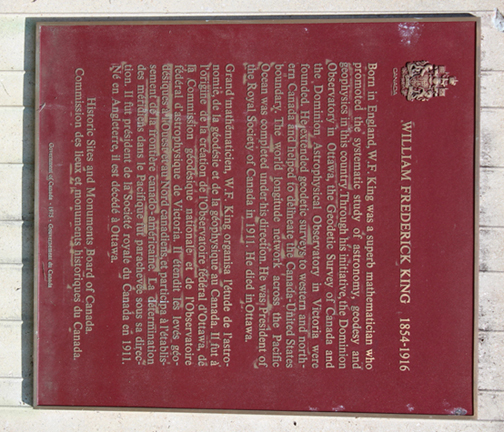
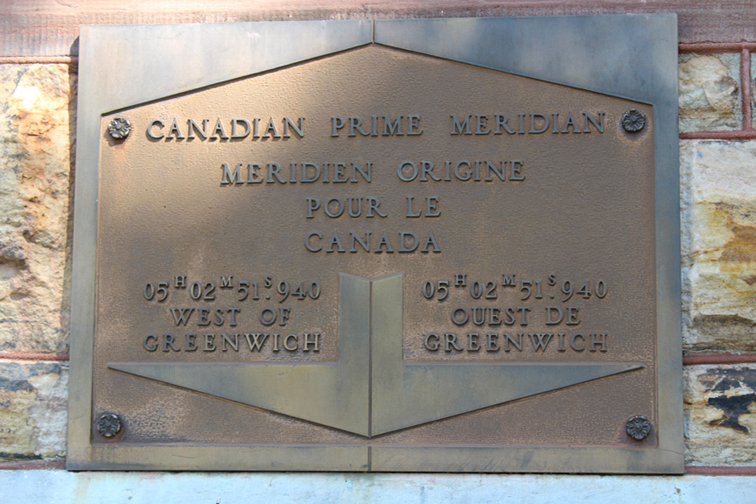
prime meridian for Canada
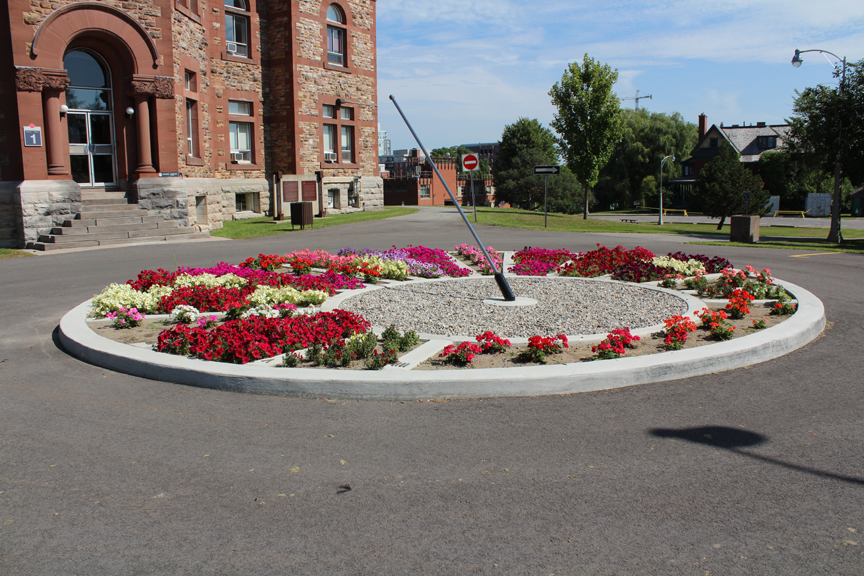
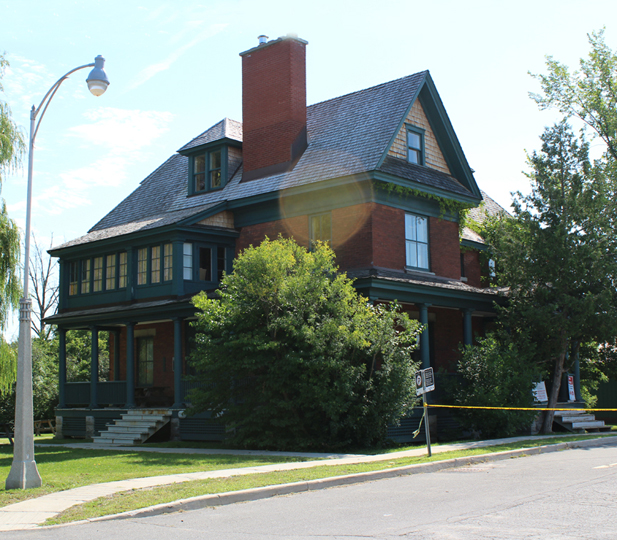
Dominion Astronomer's official residence
1. Historic mother house of the Sœurs de la Charité d’Ottawa (ASCO), commony called the Grey Nuns.
2. Astronomical monument  .
.
3. ca. 45° 25' 48" N, 75° 42' W, on the north-west corner of the historic mother house of the Sœurs de la Charité d’Ottawa, at Bruyere St. and Sussex Ave.
4. 1851.
5. A pair of imposing mural sundials (plaster, dials painted balck, with iron gnomena also painted black)
6. Designed by Fr. Jean-François Allard, OMI (1806-1889, later Abp. of Taron), when he was Chaplain to the Grey Nuns (1849-1851). The fact that these are outward facing means that they were conceived as a public service to the civic community
7. Private, but the sundials can be readily seen from the street
8. Entry in the North Amercian Sundial Society register; short OMI biography of the designer
9.
